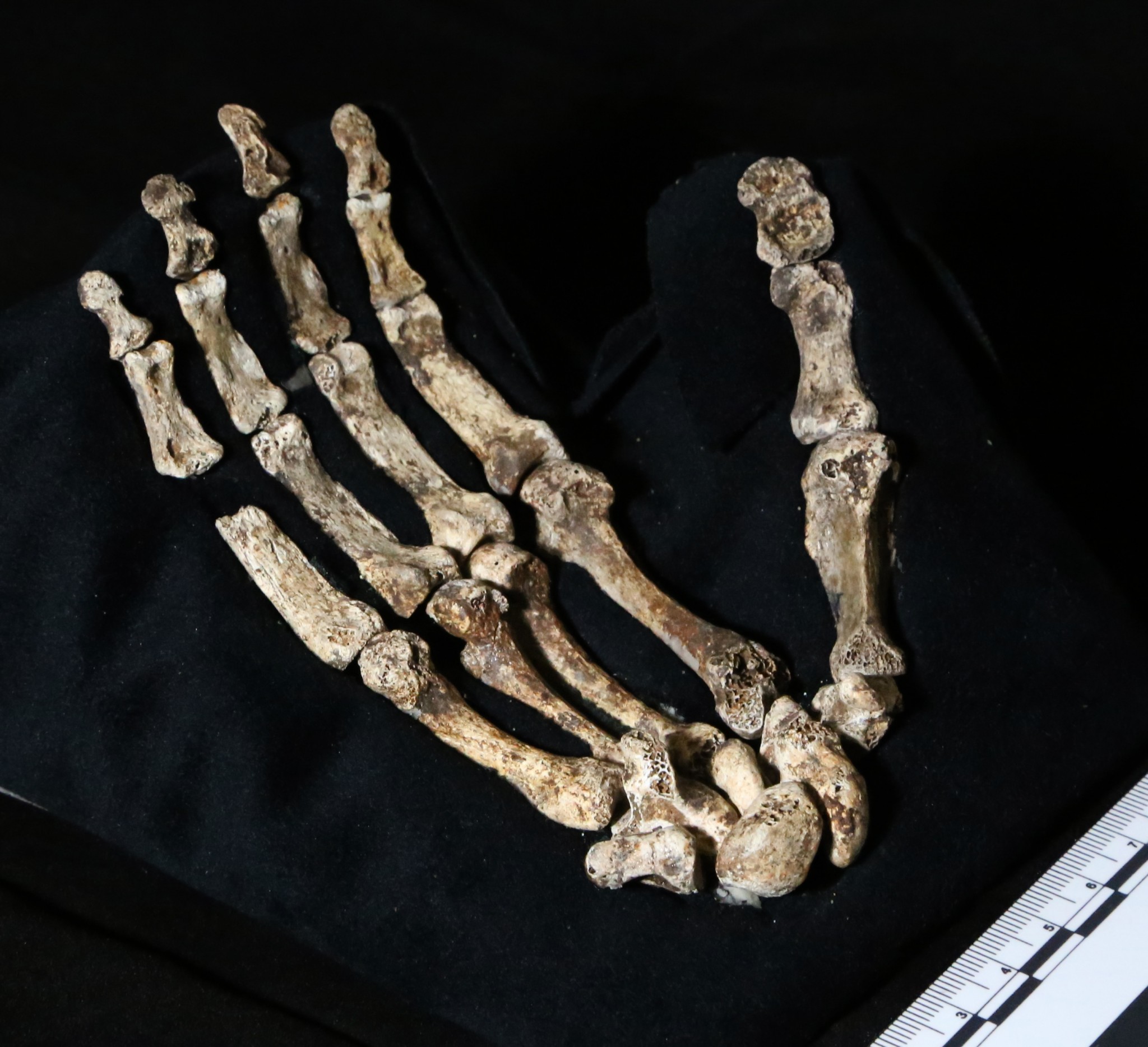Research led by University of Kent anthropologist Dr Tracy Kivell suggests that early human species Homo naledi may have been uniquely adapted for both tree climbing and bipedal walking, as well as hand use like later humans.
The discovery of Homo naledi in a South African cave was announced to the world in September 2015.
Dr Kivell’s research, which has been published in the online journal Nature Communications, reveals that the wrist bones and thumb of Homo naledi show anatomical features that are shared with Neanderthals and humans. This suggests powerful grasping and the ability to use stone tools.
However, the finger bones are more curved than most earlier fossil humans species, such as Lucy’s species Australopithecus afarensis, which suggest the hand was used for climbing, a theory supported by research on Homo naledi foot bone fossils.
Dr Kivell worked with other experts from universities in South Africa, Canada and the United States on nearly 150 hand bones, uncovered from the Dinaledi Chamber of the Rising Star cave system in South Africa.
In a second paper, also published in Nature Communications, William Harcourt-Smith of Lehman College in New York and colleagues describe the Homo naledi foot, based on 107 foot elements from the Dinaldi Chamber, including a well preserved adult right foot. They show it shares many features with a modern human foot, indicating it is well-adapted for standing and walking on two feet.
There are potentially hundreds, if not thousands, of bones still in the Dinaledi chamber to be excavated and examined. Their date of origin remains unknown.
Dr Kivell is a Reader in Biological Anthropology in the School of Anthropology and Conservation with research interests in primate locomotion, skeletal morphology, origin and evolution of human bipedalism and hand use.
The paper, entiltled The hand of Homo naledi (Tracy L. Kivell, Andrew S. Deane, Matthew W. Tocheri, Caley M. Orr, Peter Schmid, John Hawks, Lee R. Berger & Steven E. Churchill), was published in Nature Communications on 6 October 2015.
-ends-
Conact details – Sandy Fleming, Press Officer, Corporate Communications, University of Kent
T: 01227 823581 (Canterbury) 01634 888879 (Medway)
W: http://www.kent.ac.uk/communications/
Notes to editors
Established in 1965, the University of Kent – the UK’s European university – now has almost 20,000 students across campuses or study centres at Canterbury, Medway, Tonbridge, Brussels, Paris, Athens and Rome.
It has been ranked: third for overall student satisfaction in the 2014 National Student Survey; 16th in the Guardian University Guide 2016; 23rd in the Times and Sunday Times University Guide 2016; and 22nd in the Complete University Guide 2015.
In the Times Higher Education (THE) World University Rankings 2015-16, Kent is in the top 10% of the world’s leading universities for international outlook.
Kent is ranked 17th in the UK for research intensity (REF 2014). It has world-leading research in all subjects and 97% of its research is deemed by the REF to be of international quality.
Along with the universities of East Anglia and Essex, Kent is a member of the Eastern Arc Research Consortium (www.kent.ac.uk/about/partnerships/eastern-arc.html).
The University is worth £0.7 billion to the economy of the south east and supports more than 7,800 jobs in the region. Student off-campus spend contributes £293.3m and 2,532 full-time-equivalent jobs to those totals.
In 2014, Kent received its second Queen’s Anniversary Prize for Higher and Further Education.

